
The year ahead – affordability vital
We look ahead at fertilizer industry prospects for the next 12 months, including the key economic and agricultural drivers likely to shape the market during 2023.

We look ahead at fertilizer industry prospects for the next 12 months, including the key economic and agricultural drivers likely to shape the market during 2023.

More than 650 delegates from 326 companies and 56 countries gathered at the Hotel RIU Plaza España, Madrid, Spain, 17-19 October 2022, for the Argus Fertilizer Europe 2022 conference.

After two turbulent years, could the fertilizer market finally start to stabilise in 2023? Well, that’s what Dutch agricultural finance house Rabobank is predicting…
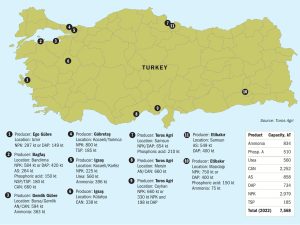
Turkey’s thriving agricultural sector has created a large and dynamic fertilizer market at the crossroads of Europe and Asia, explains Hakan Goral, the CEO of Tekfen Agri Industry Group.

CRU Events will convene the 2023 Phosphates International Conference & Exhibition in Istanbul at the Hilton Bomonti Hotel, 27 February to 1 March.

Market Insight courtesy of Argus Media. Urea: The market remained weak at the start of the year with urea prices falling as producers fought for liquidity. Egyptian product fell by $40/t to $495/t f.o.b. in a matter of days, while f.o.b. prices in the Middle East and southeast Asia similarly fell to around $440/t. Urea prices in many end-user markets also slumped: US prices fell over the course of the first week of January by $30/t, Brazil by $15/t and many European markets by around $20/t.
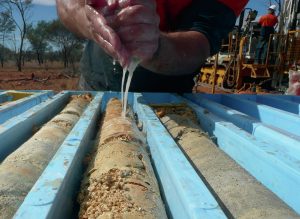
Fertilizer International presents a global round-up of phosphate rock, phosphoric acid and finished phosphates projects.
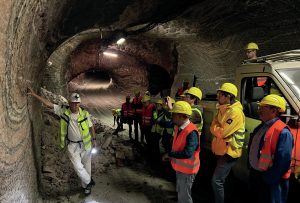
The global potash market has endured a tumultuous 18 months, says Andy Hemphill, senior editor for potash and sulphuric acid at ICIS Fertilizers. Export sanctions, high offer prices and buyer unrest persist as we enter 2023.
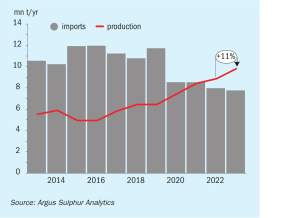
Meena Chauhan, Head of Sulphur and Sulphuric Acid Research, Argus Media, assesses price trends and the market outlook for sulphur.
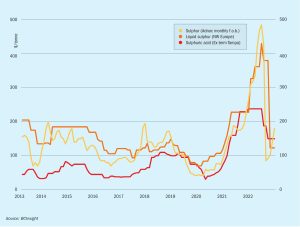
Processed phosphates pricing will be a major influence in the coming months. A gap remains between historical levels of sulphur and DAP pricing that points to the potential for sulphur prices to recover to higher levels during 2023.